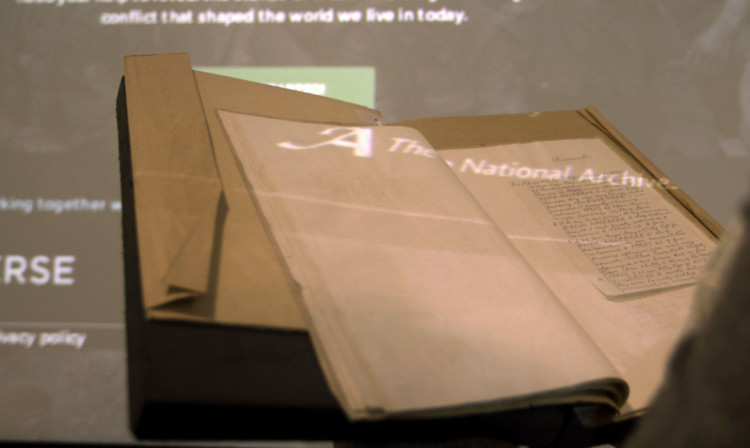Around 300,000 pages of First World War diaries have been digitised, and “citizen historians” are encouraged to read them to unearth new discoveries about life at war.
In an “unprecedented opportunity” for both academics and the public, the National Archives is making the first batch of diaries from France and Flanders available online, and once complete it will comprise more than 1.5m pages opening them up to a global audience for the first time.
Also launching today is Operation War Diary an online crowdsourcing partnership project between The National Archives, Imperial War Museums (IWM) and Zooniverse which aims to uncover details from within the diaries.
The diaries, the most popular records from The National Archives’ First World War collection, are being digitised as part of the organisation’s centenary programme.
William Spencer, author and military records specialist at The National Archives, said making the diaries available online “allows people across the world to discover daily activities, stories and battles of each unit for themselves”.
He described the “big advance” as a new way of delivering the information as well as a new way of understanding it.
Mr Spencer said the opportunity has now been created for public, history enthusiasts, family historians and researchers to explore the official records, and said this “may lead to some new discoveries and perspectives of this important period of history”.
Reflecting on surprising revelations and interesting things he has learned from the diaries, he recalled cartoons, “slightly draconian” printed orders and instructions, details of acts of gallantry, as well as “watercolours of gas mask designs for horses”.
The first batch of unit war diaries gives a real-time account of the first three cavalry and the first seven infantry divisions who were part of the first wave of British army troops deployed in France and Flanders.
They cover the entire period of the units’ involvement in the war, from their arrival on the front to their departure in 1919.
Luke Smith, digital lead of the First World War Centenary Programme at the IWM, said the information uncovered may not have previously been communicated through letters home or included in traditional history books and should build a new and more authentic picture of the war.
Chris Lintott, founder of Zooniverse and presenter on The Sky At Night, called the crowdsourcing aspect “an engine of motivation” for people to learn about the war.
Aiming to engage people in the centenary, Zooniverse, with its expertise in citizen science technology, previously used to map the stars, is encouraging volunteers to sign up to Operation War Diary.
Volunteers will be assigned a segment of a diary and asked to tag key details from the pages, such as names, places and events.
The data inputted will be collected and used to enrich TNA’s catalogue descriptions for the unit war diaries, enabling people to trace their army ancestors.
